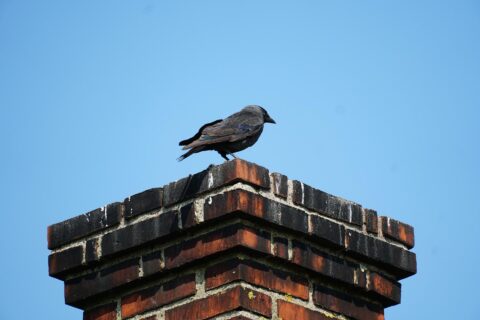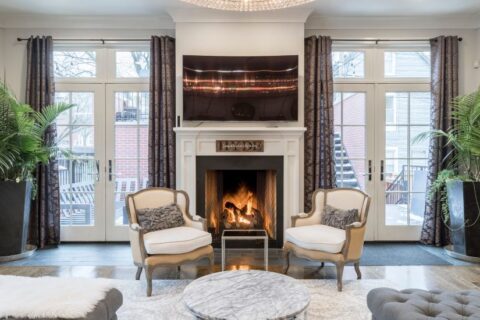Chimney And Fireplace Issues In Older Homes And Row Houses
Older homes, especially in historic cities like Baltimore, have their own unique charm. With stunning architectural details – such as original hearth fireplaces – they attract potential homeowners and admirers alike.
While it might be a beautiful focal point in a living space, the fireplace in your older home might be hiding underlying chimney issues. As safety and technology standards in the industry continue to advance, many older fireplaces are out of code and no longer meet current building and safety measures!
Is my fireplace up to code?
In an area with many historic homes, old can be a relative term. Well-built older fireplaces that are 80, 90, or even 100 years old can continue to burn well when properly maintained. However, most fireplace systems that are more than 60 years old are no longer up to current safety and building codes. Determining when a fireplace or chimney was installed can help a chimney sweep figure out what work it may need.
Do you own an older or historic home, particularly built before 1900? If so, you are at greater risk for your fireplace or chimney no longer meeting current building codes and standards! Homes with fireplaces that were built or installed after the 1950’s typically have prefabricated or block chimneys. These building techniques and materials are still in use today. However, the homes built during or after this time frame are at little risk of not being up to code.
Safety concerns for older fireplaces.
Homes with older fireplaces are not automatically a safety risk. Many historic homes have fireplace systems that have worked well for decades with no problems. However, older and historic fireplaces are more apt to have maintenance issues; while all fireplaces should be swept and inspected at least once per year, older fireplaces and chimneys often have additional maintenance problems. The following are just a few of the safety concerns for older fireplaces.
- Unlined chimney.
Chimney liners were not regularly used in fireplace construction until the early 20th century. Due to this, many historic homes have unlined chimneys. Even if the fireplace still works well, there are a number of safety concerns associated with unlined chimneys. Fireplaces with unlined chimneys are at greater risk for chimney fires and inefficient burning. Also, damage to surrounding building materials from hot air, smoke, and gas. Having the chimney relined can protect both your home and the fireplace system from further damage! - Masonry damage.
The older the masonry of your home’s fireplace and chimney the more significant the damage to it may be. Spalling, staining, cracked mortar, or missing bricks are all signs of masonry damage that needs to be repaired. Repairing masonry damage not only helps restore the look of your older fireplace system, but it can also reinforce the chimney to help improve structural stability. The tuckpointing process can be used to repair small areas of damage to the bricks and mortar; matching the new bricks to the existing structure creates a seamless finish.
Original fireplaces are a beautiful way to honor the history of your older home. By ensuring your fireplace system is up to code, homeowners can enjoy the charm of the past with the modern safety of the present. For more information on keeping your older fireplace up to code, contact ChimneyTEK today!



